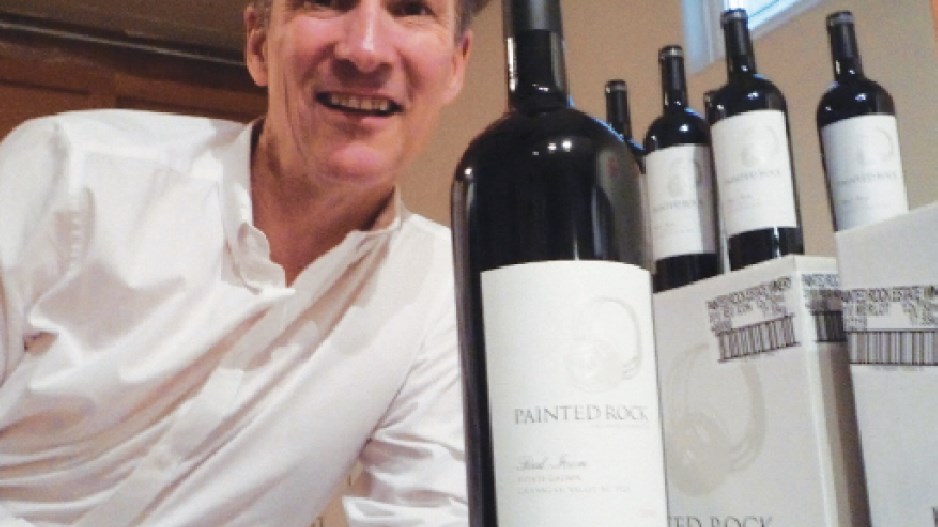British Columbia winemaker John Skinner used to hate local wines. Now, not only is he a local winemaker, but his Painted Rock Estate Winery in Penticton is also one of a number of local wineries starting to find an export market.
And what a market that can be. Earlier this year, Skinner discovered that Painted Rock winery’s Red Icon was listed at almost $900 a bottle in a Shanghai restaurant (see “Asian restaurants charging top dollar for B.C. wines” – BIV Jan. 7–13)
“I was not a champion of B.C. wines,” said Skinner, who formerly earned a living in the investment industry before switching to winemaking 10 years ago. “I had a very large cellar and less than 1% of it was B.C. wines.”
His epiphany came in the 1990s when the industry started to see winemakers rewarded with excellent fruit after ripping out vineyards and plants that had produced the notorious jug wines of the 1970s. It was the planting of these new species that put B.C. on the world wine map.
He was sold on B.C.’s potential when wineries like Burrowing Owl started producing award-winning wines.
“They did a really good job; they were showing that our region could ripen fruit in the way that other accomplished regions were ripening fruit. I thought if this region had this potential, I wanted to be part of it,” Skinner said.
Today, Painted Rock is one of a small group of vintners leading the charge exporting B.C. wines. The amount is a drop in the bottle — about $8 million last year out of a production of $204 million in “made in B.C.” wine. But that is up from virtually nothing 10 years ago.
Mainland China quaffs by far the largest share of B.C.’s wines, with exports rising from $200,000 in 2007 to $7 million last year. Hong Kong (at $371,000), the United States ($280,000) and Taiwan ($92,000) account for much of the remainder.
Skinner believes the B.C. industry has to focus on sending its very best wines overseas if it hopes to make its mark in an intensely competitive world market.
Ezra Cipes, CEO of Summerhill Pyramid Winery in East Kelowna, says the B.C. industry should concentrate on selling its expensive wines overseas, as his winery has been doing since 1991 with its famous icewines. Summerhill’s 2008 Zweigelt icewine, made from the Austrian varietal of the same name, sells for $148 for a 375-millilitre bottle in B.C. and for much more than that in China.
“We have dabbled in India, Japan and Hong Kong because we don’t want to say no to an opportunity, but the areas where we have invested the most is in the United States and mainland China,” said Cipes.
“There is no point in us exporting value wine,” Cipes said. “There is much cheaper land and labour and easier growing conditions in Australia, Chile and Spain. This is one of the most expensive places in the world to make wine. We would be foolish to compete in the under-$15 bottle of wine category.”
Four times a year, Business in Vancouver promotes the message of business excellence with our Business Excellence Series. Topics identify specific issues that contribute to business excellence. Our 2014 series includes Manufacturing and Exporting, which will be presented on June 10, 2014.
For more information about this event, which includes a moderator-led panel discussion/breakfast, click here.




